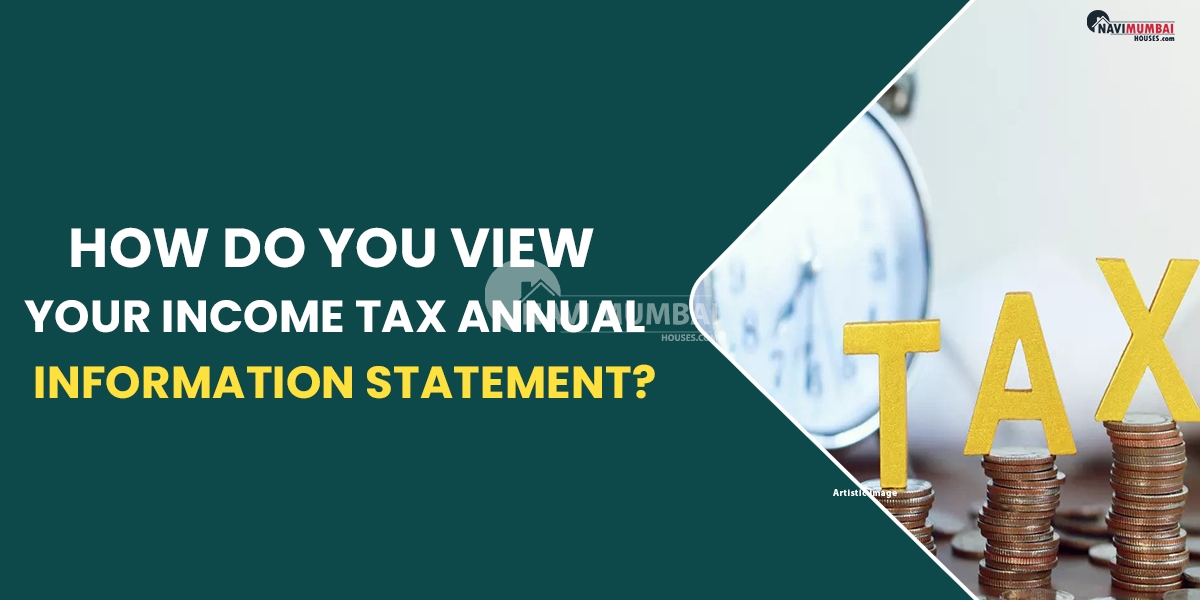
- March 6, 2024
- News
How Do You View Your Income Tax Annual Information Statement?
An income taxpayer in India can find all the information pertaining to their tax payments on one comprehensive document called the yearly information statement. On March 4, 2024, the Income Tax (I-T) Department announced that it was in the process of notifying some taxpayers regarding income tax returns (ITRs) submitted for the assessment year (AY) 2021–2022 (FY2020–21). Taxpayers whose ITR data does not match the data the department has obtained from multiple sources will receive correspondence.
Are you searching 3bhk flat for rent in kharghar?
“A’mismatch’ has been found in certain instances of ITRs filed for AY 2021–2022 between the information filed in the ITR and the information of specific financial transactions, as accessible with the department. The ministry of finance said in a statement that “as part of the e-Verification Scheme-2021, the department is in the process of sending communication(s) to the taxpayers for the mismatch in information pertaining to AY 2021-22 (FY 2020-21).”
Information about specific financial transactions of taxpayers is provided to the Income Tax Department by a number of sources. This information is include in the Annual Information Statement (AIS) module and is seen by the taxpayer in an effort to foster voluntary tax compliance and boost transparency.
What exactly is an annual information statement?
An Annual Information Statement is a comprehensive document that includes every detail pertaining to an Indian income taxpayer’s tax payment. In India, the income tax administration keeps track of taxpayer data for particular fiscal years using a predetermined structure. This information, known as the Annual Information Statement (AIS), is sent to taxpayers on Form 26AS. All of the data regarding the taxpayer’s earnings, outlays, investments, tax applicability, etc., is contain in the AIS. Additionally, it gives taxpayers the chance to comment on the transactions that have been disclosed.
What is the purpose of the AIS?
The AIS provides the taxpayer with comprehensive information and the ability to submit online reviews. It facilitates compliant pre-filling of income returns and encourages voluntary compliance. The message aims to discourage taxpayers from failing to comply as well.
What’s the difference between AIS & Form 26AS?
Form 26AS is expand upon by the AIS. The AIS displays savings account interest, dividends, rent received, transactions involving the purchase and sale of securities and real estate, foreign remittances, interest on deposits, GST turnover, and other information, whereas Form 26AS provides details of high-value investments such as real estate acquisitions and TDS/TCS transactions.
Information shown in the AIS
- Masked Aadhaar number
- Date of birth
- Formation
- PAN
- E-mail address
- TDS/TCS information
- SFT code
- Mobile number
- Statement of Financial transaction (SFT)
- Incorporation
- Name of the taxpayer
- Residential address
- payment of taxes under many headings, such as self-assessment tax and advance tax
- Purchase of foreign currency, etc.
- Data about Annexure II salary
- Outward foreign remittance
- Refund initiated during a financial year
- Refund
- Interest on refund
- Demand
- Specifics of the data obtained from the other sources
- Demand raised
How to view the Annual Information Statement?
Step 1: Open your browser, copy, & paste the following URL.
2nd Step: Log into the e-filing portal.
3rd Step: From the ‘Services’ page, select the Annual Information Statement (AIS) option.
4th Step: On the site, select the AIS tab.
5th Step: To view the Annual Information Statement, select the appropriate financial year and click the “AIS” tile.
What file formats is the AIS available for download?
The Annual Information Statement (AIS) is available for download in CSV, JSON, and PDF file formats.
How to submit feedback on AIS?
Step 1: Click the “Optional” button in the feedback column for pertinent information to provide input on the active information that is shown under TDS/TCS information, SFT information, or other information. You’ll be sent to the screen labelled “Add Feedback.”
Step 2: Select the appropriate feedback selection. Enter the specifics of the feedback.
Step 3: Select “Submit” from the menu.
Can you change the feedback?
You are able to change your AIS feedback, yes. Furthermore, there is no restriction on how many times you can edit earlier feedback.
You’re looking for Projects in Vashi have the Best Properties In Navi Mumbai Like Ready to Move:https://navimumbaihouses.com/properties/search/vashi/
If you want daily property update details please follow us on Facebook Page / YouTube Channel / Twitter









